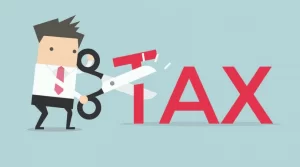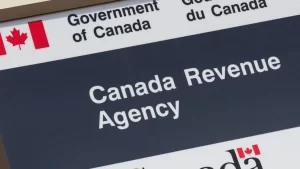You might know about the deadline for closing your RRSP. But do you know what you’ll do with your money then? Here are your RRSP options when you turn 71
Maybe you’ve been saving in your registered retirement savings plan (RRSP) for decades. Or maybe you started only recently, after you paid off your mortgage. Either way, there’s a RRSP deadline looming in your future, and it’s not the 1st of March. By the end of the year you turn 71, you’re required by law to close down your RRSP.
What will you do with your RRSP money?
It took a long-term approach to saving up for your RRSP. So it stands to reason that you’ll want to take a long-term approach to spending it.
You have 4 main options. You can:
- Take it in cash.
- Purchase an annuity.
- Transfer it into a registered retirement income fund (RRIF).
- Some combination of the above.
Before you decide which route to take, it’s important to get all the facts plus some expert advice. Why? Because once you’ve committed to an option, you may not be able to change your mind.
1. Taking the cash from your RRSP
Remember, any money you take out of your RRSP is considered taxable income.*
If you pull funds from your RRSP in you retired years, you’re more likely to pay less tax. That’s because you’re more likely to be in a lower tax bracket at that stage of your life.
(*The only exceptions to this rule is if you’ve borrowed from your RRSP to buy a first home under the Home Buyers’ Plan or to go back to school under the Lifelong Learning Plan.)
- What happens when you withdraw from your RRSP early?
You may have a fairly significant amount in your RRSP by the time you reach 71. But if you cash it all out you may have to pay substantial income tax. That’s why this isn’t the most recommended route to take.
But what if you really, really need to access some of that cash for something vital? Then you may want to talk to a financial expert, like an advisor, about the most tax-efficient way to do it.
2. Buying an annuity with your RRSP funds
A life annuity is the best way to protect yourself against the risk of outliving your money.
It works like this: You invest a lump sum with a life insurance company and pay a premium.* In exchange, you get a guaranteed income for life, paying tax on the income as you receive it.
(*A premium refers to the monthly or annual fees you pay for having insurance.)
There are some important variables to consider when buying an annuity. Generally speaking, the longer the guaranteed period (or the younger you are when you buy a life annuity) and the more additional guarantees* included, the lower the annual income you’ll receive in exchange for a given lump sum.
(*Additional guarantees refer to factors like indexing or continuing payments to your spouse after your death.)
- To estimate the income you can receive from a life annuity, try this annuity calculator.
The other major factor that affects annuity payments is beyond your control: long-term interest rates. These influence what the insurance company can expect to earn by investing your money.
The insurance company takes future investment income into account when it establishes the amount of income you can receive from a given lump sum. The income is fully guaranteed when you sign an annuity contract. This means that future fluctuations in rates won’t affect the income you’ll receive.
What if equity markets tumble or long-term interest rates crater? Your payments won’t decrease. But they also won’t increase if markets or interest rates go through the roof.
3. Putting your RRSP money into a RRIF
A RRIF is often a type of registered plan, like an RRSP, that can hold various investments, including:
- stocks,
- bonds,
- GICs,
- segregated funds,
- mutual funds and more.
Like an RRSP, the investments within a RRIF grow tax-deferred. So you won’t have to pay tax until you withdraw funds.
But sometimes, such as when you buy a segregated fund contract from an insurance company, the contract IS the RRIF. And rather than sheltering the growth of your investments from tax while you’re saving for retirement as in an RRSP, a RRIF shelters your investment growth during your retirement. It also allows you to spread out the income tax bite over the time it takes you to draw it down.
Rolling your RRSP money into a RRIF means your money can continue to grow, even while you’re tapping it for income. But, by law, you must withdraw an increasing minimum percentage of the value of your RRIF each year. This rule applies whether you need the money or not.
You must take out the annual minimum payment by December 31 of the year following the year you establish your RRIF. This gives your investments a bit more time to grow undisturbed.
At the moment, the minimum withdrawal factor is 5.28% at age 71. It rises gradually, reaching 10.21% at age 88 and topping out at 20% at age 95. The percentage you have to take out for any given year is calculated using the fund value and your age, both as of January 1 for the year of your withdrawal.
A RRIF also gives you the flexibility to take out more income when you need it. But you must work out whether you can do so and still have your RRIF last as long as you need it to.
Plus, let’s say you have a spouse or common-law partner who’s younger than you. In this case, you can make your RRIF last longer by basing your withdrawals on that person’s age.
You can also pass your RRIF on after your death without triggering a tax bill by making your spouse or common-law partner the successor annuitant.*
(*A successor annuitant is the spouse or common-law partner who gets ownership of the RRIF after the account holder dies.)
How to decide what’s right for you
This is clearly a case where expert advice can be invaluable.
Many advisors recommend a combined approach. That means using some of your RRSP savings to buy an annuity. This annuity can help you pay for fixed expenses like food and housing. You can put the rest in a RRIF to pay for more discretionary spending.
Get In Touch with Abdullah CPA to discus your RRSP Planning.






